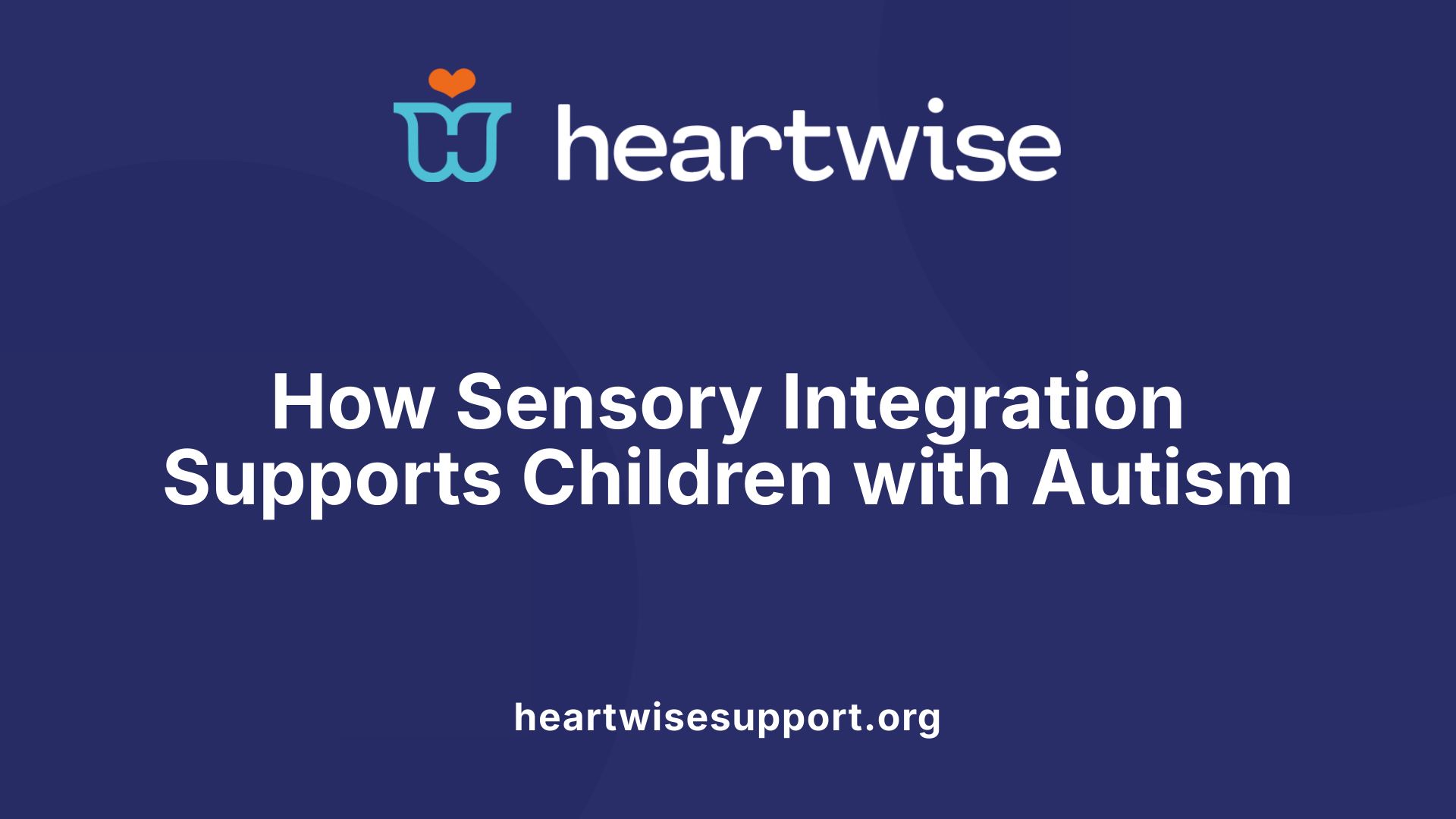Understanding Occupational Therapy for Autism Spectrum Disorder
Occupational therapy (OT) is a vital component in supporting children with autism spectrum disorder (ASD). It focuses on enhancing daily functioning, communication, social skills, and sensory regulation, helping children participate meaningfully in home, school, and community activities. This article explores the approaches, strategies, assessment methods, and benefits of OT tailored to children on the spectrum.
Common Approaches in Occupational Therapy for Children with Autism

What are common occupational therapy approaches for children with autism?
Occupational therapy (OT) for children with autism involves a variety of strategies tailored to address sensory, motor, cognitive, social, and daily living challenges. One of the most prevalent methods is sensory integration therapy, developed by Jean Ayers, which focuses on improving sensory processing and regulation. It employs structured sensory activities using equipment like swings, weighted vests, tactile disks, and bouncing tools. These activities help children adapt to sensory stimuli, reduce stress, and improve responses to sensory input.
Play-based therapy is another fundamental approach, where engaging and enjoyable activities are used to promote social interaction, communication, and emotional regulation. Therapists often incorporate toys, role-playing, and social stories to facilitate learning and relationship building. Social skills training, including video modeling and peer group activities, is employed to teach children appropriate social behaviors and cues.
Developing daily living skills such as dressing, grooming, eating, and self-care is central to OT. Visual supports like schedules, social stories, and assistive technology are used to enhance understanding and independence. Techniques such as breaking tasks into manageable steps or using prompting strategies can be highly effective.
Motor development plays a critical role, with interventions aimed at improving fine and gross motor skills. These include obstacle courses, balance exercises, and hand-eye coordination activities like puzzles or sorting games.
Incorporating sensory diets—a personalized plan of sensory activities—helps children regulate emotions and arousal levels throughout the day. Therapists also utilize visual supports and technology, such as picture boards and digital apps, to reinforce learning and communication.
Overall, the combination of these approaches aims to foster independence, improve communication, enhance social participation, and promote emotional well-being. The therapy plans are individualized, focusing on maximizing each child's strengths and addressing specific challenges to improve their quality of life.
Strategies and Techniques in Pediatric Occupational Therapy
Occupational therapy (OT) for children with autism adopts a broad range of strategies aimed at improving their daily functioning and social participation. Among these, sensory-based approaches play a crucial role. Sensory integration therapy, developed by Jean Ayers, utilizes activities that stimulate or calm the senses—such as swinging, tactile disks, or weighted vests—to help children process sensory information more effectively. These techniques can reduce sensory overload and sensory-seeking behaviors, promoting better engagement and self-regulation.
Play activities and structured routines form another cornerstone of OT for autism. Therapists often employ engaging play schemes, obstacle courses, and specific activities like tearing paper or building with blocks to develop fine and gross motor skills. Visual schedules and step-by-step task breakdowns help children understand daily routines, reduce anxiety, and foster independence.
Social skills training is enhanced through tools like social stories, video modeling, and peer interaction groups. These methods teach children to recognize social cues, improve communication, and build relationships. For example, social stories describe social situations in simple terms, helping children navigate interactions confidently.
Developmental and behavioral interventions are integrated into therapy plans. Approaches such as the Early Start Denver Model (ESDM), pivotal response treatment (PRT), and TEACCH focus on fostering language, cognitive, and adaptive skills through play and visual supports. Behavioral strategies include positive reinforcement and environmental modifications to promote desirable behaviors and skills.
Environmental modifications involve adapting home and school settings to better suit the sensory and learning needs of children with autism. This can include creating quiet zones, using visual aids like picture boards, and organizing space for easy access to necessary materials.
Caregiver involvement is vital. Training parents and teachers to implement strategies consistently enhances therapy outcomes. Regular collaboration ensures that interventions are tailored to each child’s unique needs and that progress continues across different environments.
Overall, occupational therapy employs a versatile toolkit of techniques. These tools are tailored to meet the individual strengths, challenges, and goals of each child, supporting them in reaching their full potential in everyday life.
Assessment Tools and Methods in Pediatric OT for Autism
 In occupational therapy for children with autism, a variety of assessment methods are utilized to understand each child's unique needs and strengths. These assessments guide therapists in developing effective, personalized intervention plans.
In occupational therapy for children with autism, a variety of assessment methods are utilized to understand each child's unique needs and strengths. These assessments guide therapists in developing effective, personalized intervention plans.
Standardized tools are commonly employed to obtain reliable measures of a child's capabilities. The Autism Diagnostic Observation Schedule (ADOS or ADOS-2) is considered a gold standard; it involves structured activities and observations focusing on social interaction, communication, and behavior. The Childhood Autism Rating Scale (CARS or CARS-2) helps rate severity by observing behaviors across several domains.
Sensory processing questionnaires like the Sensory Profile™ 2 assess how children respond to sensory stimuli, identifying sensitivities or seeking behaviors. These standardized measures provide normative data, helping clinicians track progress and tailor strategies.
Along with formal tools, clinical observation plays a vital role. Therapists observe how children interact during play or daily routines, noting sensory sensitivities, motor skills, and social behaviors. Caregiver interviews are also crucial, offering insights into the child's typical functioning across environments such as home and school.
Developmental checklists and functional assessments like the Pediatric Evaluation of Disability Inventory (PEDI) and the School Function Assessment (SFA) evaluate daily living skills, motor functioning, social participation, and academic readiness. These tools inform goals related to self-care, communication, and participation.
Diagnostic criteria from the DSM-5 and ICD-11 help identify core features of autism, emphasizing social communication deficits, restricted interests, and sensory differences. These criteria support structuring assessments and clarifying diagnoses.
In settings with limited resources, informal and play-based assessments are often used. These include observation during free play, sensory-motor processing tasks, and activities designed to elicit specific responses relevant to the child's functioning.
Combining these assessment methods provides a comprehensive understanding of a child's needs. This thorough evaluation ensures interventions are targeted effectively, ultimately supporting better independence, social skills, and quality of life for children with autism.
The Role and Benefits of Sensory Integration Therapy in Autism

How does sensory integration therapy assist children with autism?
Sensory integration therapy (SIT) helps children on the autism spectrum by engaging them in fun, play-based sensory-motor activities. The goal is to improve how they process and respond to sensory information from their environment, including touch, movement, balance, and body awareness.
Occupational and physical therapists assess each child's sensory profile to develop customized interventions. These might involve activities with balls, swings, tactile play, or calming strategies like weighted blankets and noise-canceling headphones. By exposing children to these sensory inputs in a controlled way, SIT aims to help them organize their responses better. This can reduce sensitivities, such as tactile defensiveness, and behaviors like movement fears or sensory overload.
Evaluation tools like sensory profiles are used to determine individual sensory preferences and challenges. Therapists then design targeted activities, like swinging or tactile disks, to promote sensory regulation and improve participation in daily activities, social interactions, and emotional control.
Although some research supports SIT's benefits, such as improvements observed in behavioral and sensory responses, there are limitations. For example, studies like the SenITA trial show positive trends but often involve small sample sizes and varied methodologies. Thus, while promising, definitive evidence for long-term effectiveness remains limited.
In summary, SIT aims to help children develop better sensory processing abilities, increase engagement in everyday activities, and support overall social and emotional development. With ongoing research, it remains a widely used intervention in occupational therapy for autism.
Maximizing Potential Through Tailored Occupational Therapy
Occupational therapy for children with autism is a comprehensive, individualized process that utilizes evidence-based approaches, innovative strategies, and goal-oriented interventions. It plays a critical role in helping children develop essential skills, reduce sensory and behavioral challenges, and attain greater independence. Early diagnosis and consistent, collaborative efforts among families, educators, and therapists maximize outcomes and enhance quality of life. By integrating sensory, motor, social, and cognitive therapies, occupational therapy fosters a supportive environment where children with autism can thrive and reach their fullest potential.
References
- Occupational therapy - Autism Speaks
- A Guide to Occupational Therapy for Autism | USAHS
- Occupational Therapy for Children with ASD | CHOP Research ...
- Why is occupational therapy important for autistic children?
- A Guide to Occupational Therapy for Autism Students
- Occupational Therapy Interventions for Adolescents With Autism ...
- Treatment and Intervention for Autism Spectrum Disorder - CDC











